Potosí & Sucre: A tale of two cities
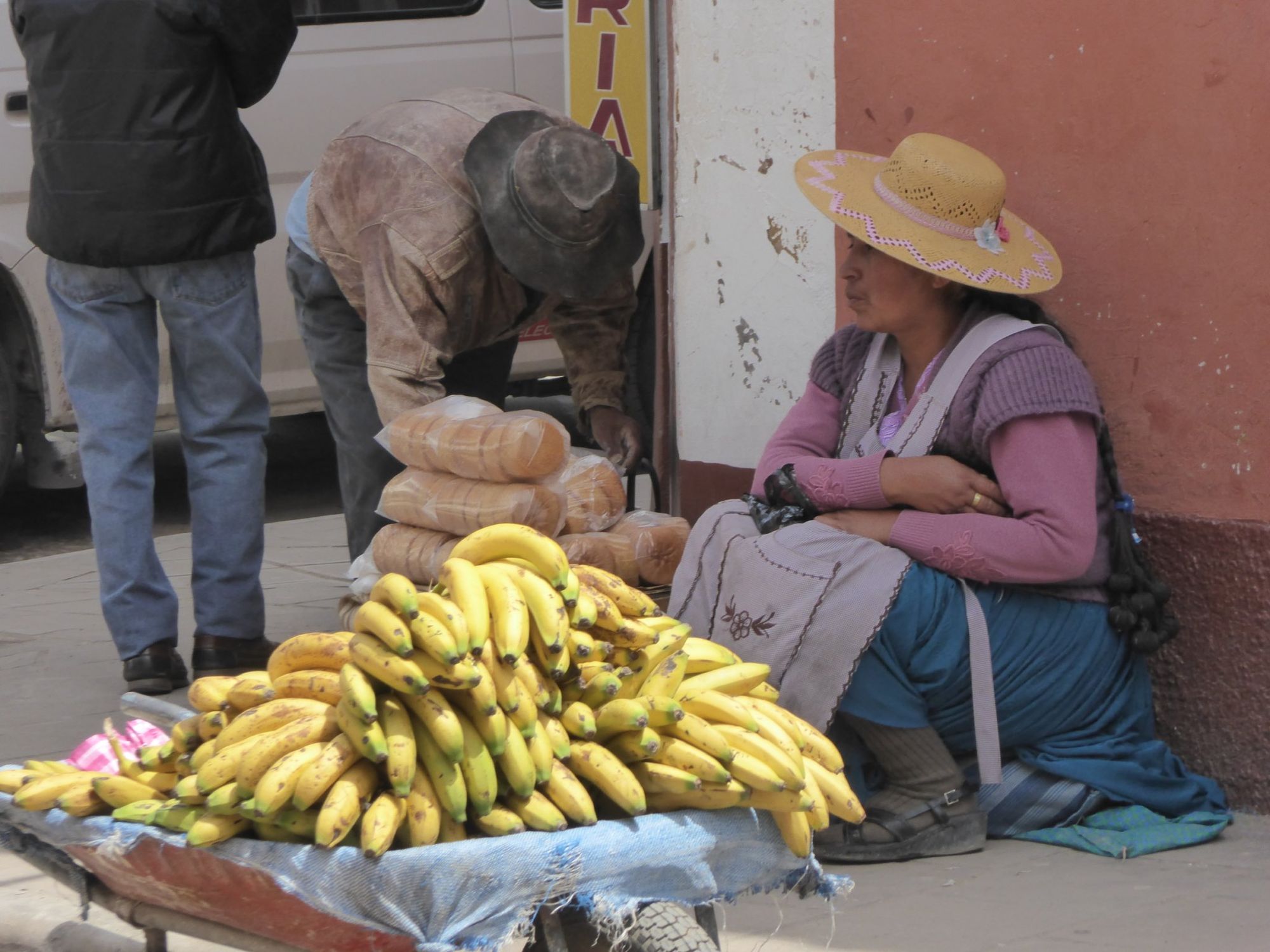
Potosí is one of the highest cities in the world, at a lofty 4,067 metres above sea level. As our taxi struggled up one of the city's many steep and narrow streets, the charcoal clouds hanging overhead suddenly fell in on themselves, thunder rippling out as hailstones started pouring from the sky.
The windscreen wipers on the battered old car couldn't keep pace with the weather, and our driver squinted through the foggy glass as he navigated his way through the old town. I'd never seen anything quite like it; for half an hour the hail just kept falling, pelting the roof of the car. Locals dashed for cover, holding plastic bags over their heads as makeshift umbrellas. Hailstones quickly piled up on the pavement, while the hilly streets turned into rivers of fast-flowing icy water. On arrival at our hotel we sat in the car for ten minutes, hoping that the deluge would ease off; eventually we just grabbed our bags and made a dash for it.
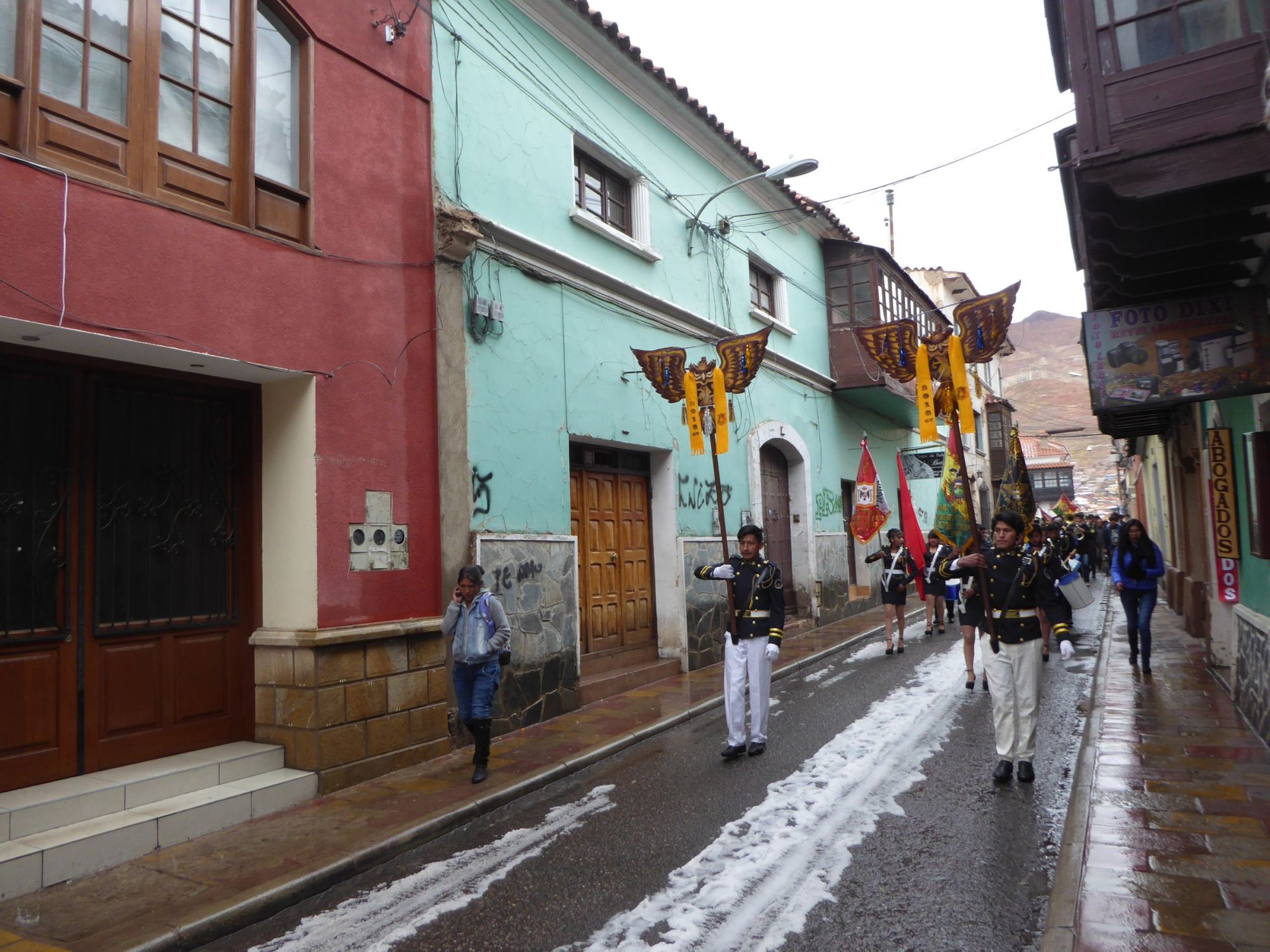
Later that afternoon we emerged from the hotel into a wintry scene. Hail covered the ground like slushy snow, and kids took turns to try and jump over the torrents of meltwater still gushing down the hills. Although the hail had stopped falling, there was a chill in the mountain air; to compound things, Polly was feeling unwell from the altitude, and I also had the beginnings of a headache. We took refuge in a cafe on the Plaza 10 de Noviembre, and as we waited for our coca tea to arrive I wondered whether we'd made a mistake stopping here on our way from Uyuni to Sucre.
The next day we woke up to find that the extreme weather had knocked out the electricity in the neighbourhood where we were staying. Over a candlelit breakfast, we discussed whether to just give up on Potosí and head to Sucre a day earlier than planned. After some deliberation we decided we'd give the city one last chance, and ventured out to see whether anything nearby was open.
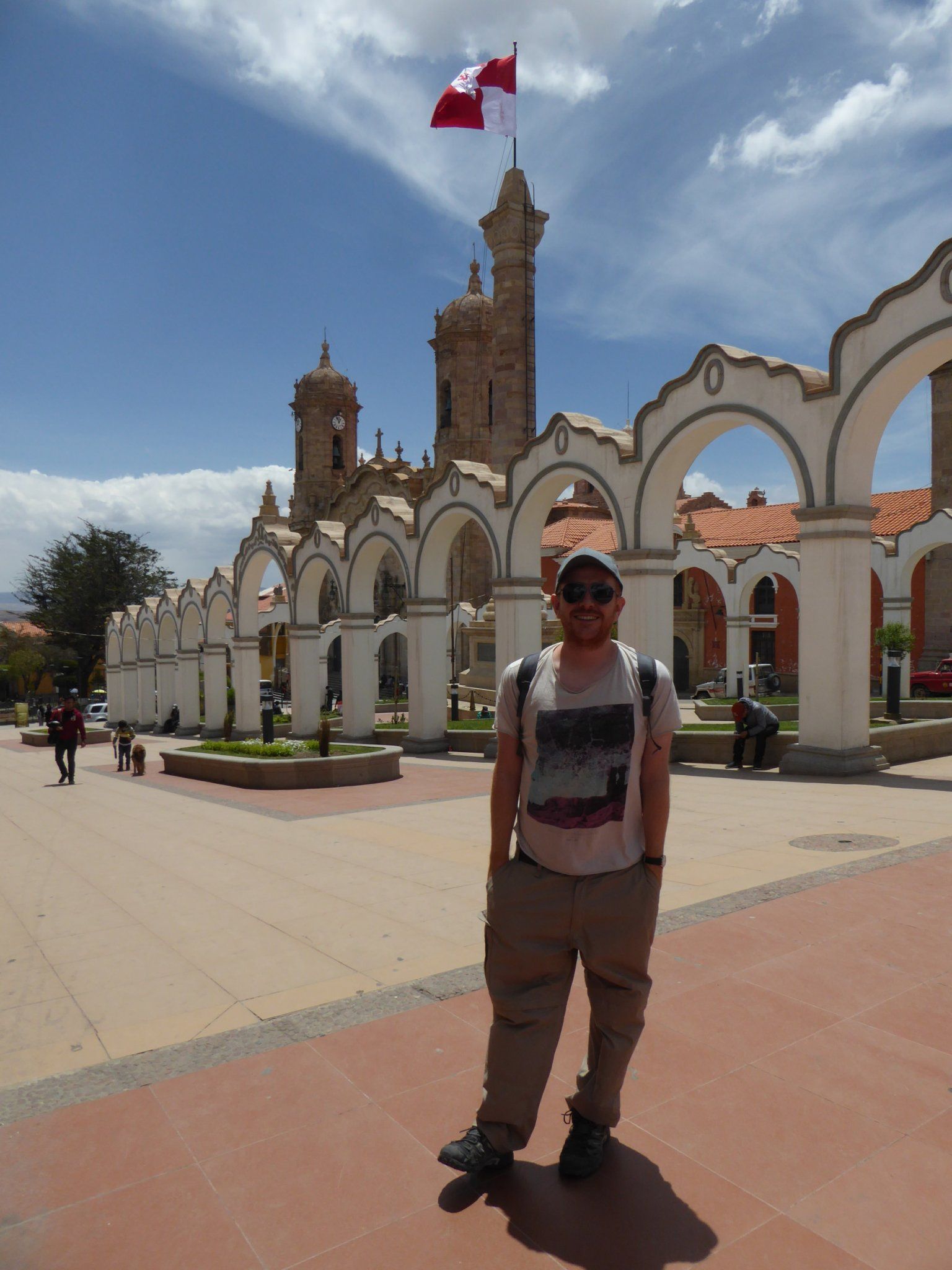
The dazzling mountain sun painted Potosí in a different light. As we inched our way down the steep streets, we began to appreciate the beautiful Spanish colonial architecture. This hilly city high in the Andes, with its harsh climate and hardy Quechua inhabitants, seems like an unlikely setting for so many elegant churches and regal mansions, but this was once one of the richest cities in the world. In its 17th century heyday Potosí was home to over 200,000 people, more than London, Milan or Seville.
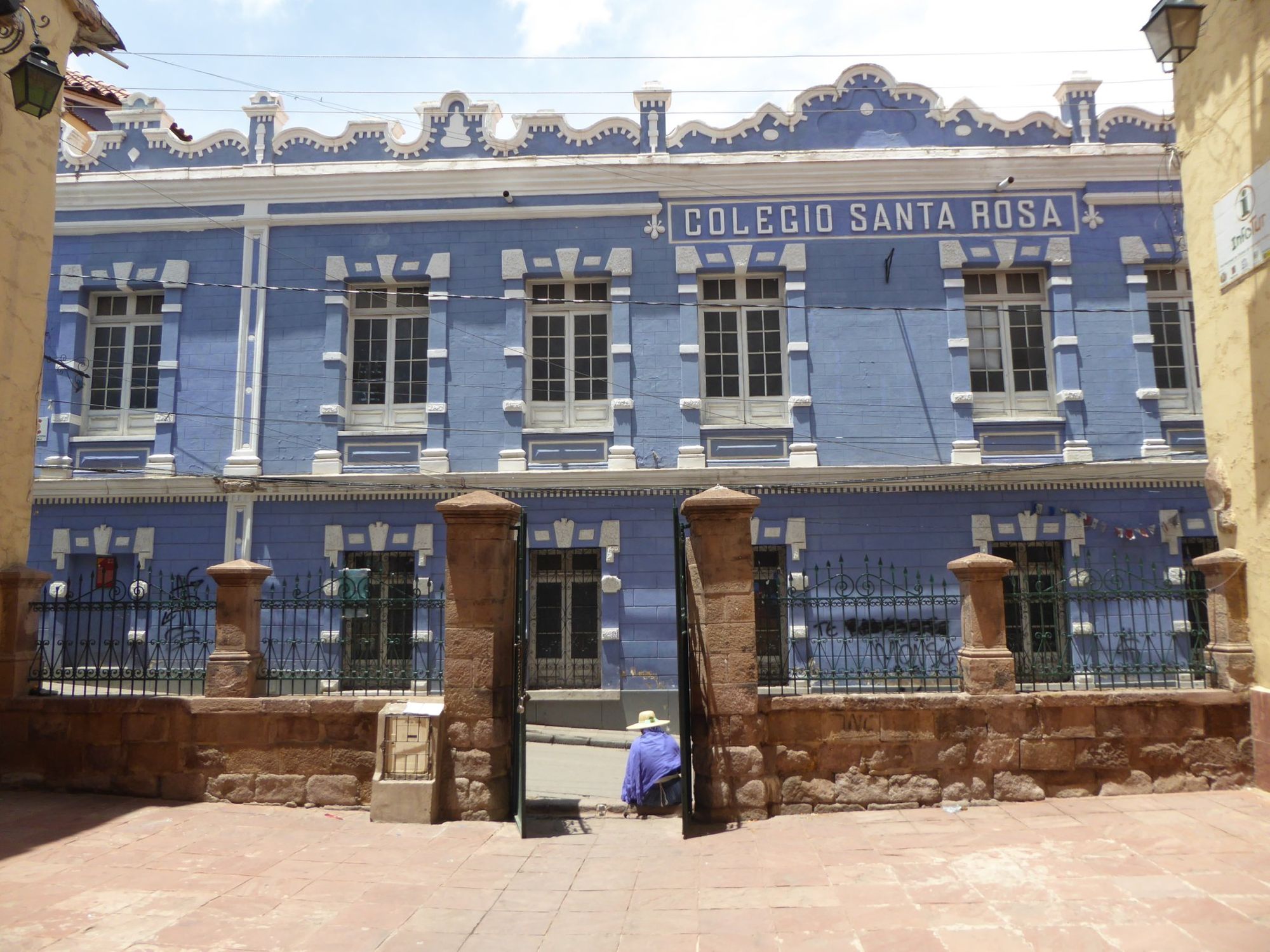
Luckily most of the city still had power and was open for business, so we scaled an 18th century Jesuit bell tower to get a bird's eye view. Rising above the terracotta roofs was the unmistakeable shape of the Cerro Rico, the 'Rich Hill'. Colonial Potosí owed its incredible wealth to the vast silver deposits found inside this mountain; thousands of indigenous labourers and African slaves died in the mines extracting silver for the Spanish crown, and at one point the Cerro Rico was producing an estimated 60% of the world's silver. Although the mountain's resources have been largely exhausted, there are still miners working there in appalling conditions. It's possible to visit the mines on a horrible-sounding tour, but we decided to give it a miss.
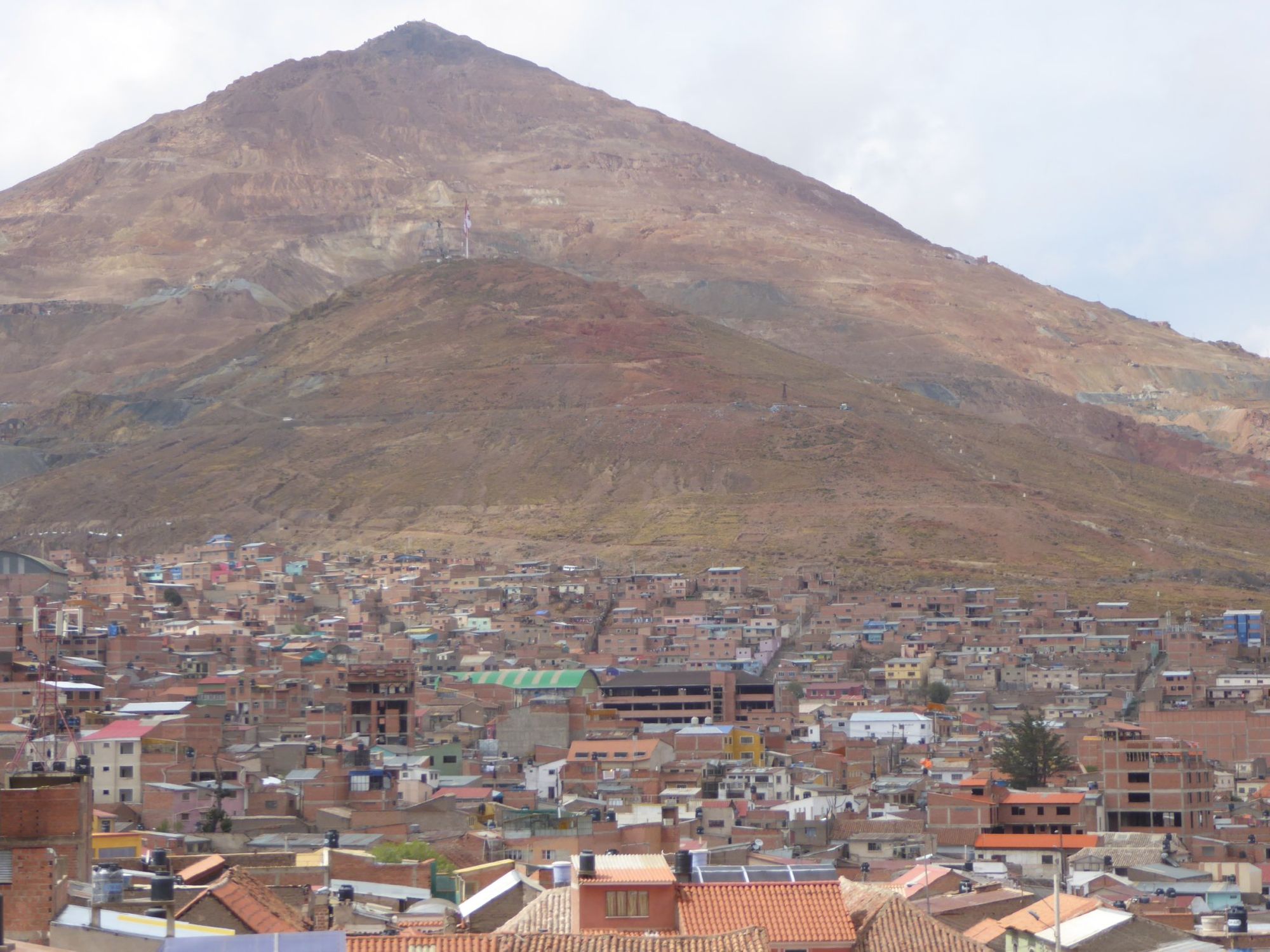
Instead we spent the morning exploring the street life of Potosí. Our first few days in Bolivia had been spent travelling amongst wild, empty landscapes where we would drive for hours without seeing another person, so the bustling markets and squares provided quite a contrast. Knackered old minibuses known as micros chugged along belching clouds of acrid, eye-watering diesel fumes; smartly uniformed schoolkids joked around on their lunch break; and plump Quechua ladies sat by the roadside selling fresh fruit juices, lurid jellies and all manner of sweet and savoury snacks.
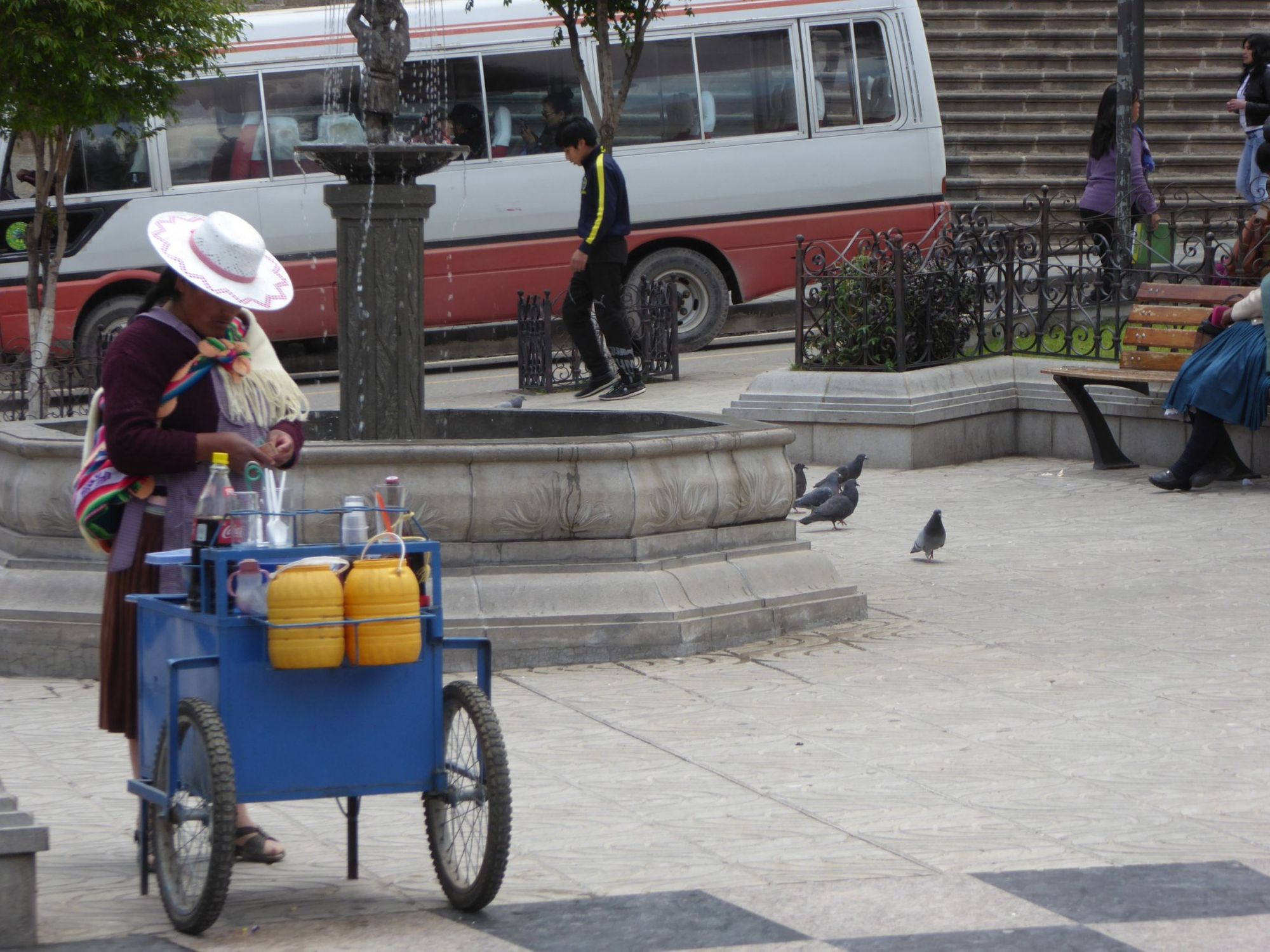
Potosí's main tourist attraction, other than the voyeuristic spectacle of the mine tours, is the Casa Nacional de la Moneda, a museum housed inside the former royal mint. This imposing building occupies an entire city block, and explains the process by which the vast quantities of silver from the Cerro Rico were forged into the coins that helped finance the Spanish empire.
We were taken around the museum on a guided tour and shown the huge mule-driven presses that were used to flatten silver bars, which the coins were then punched out of. Our guide took us through the history of the mint, and the evolution of the minting process; we were surprised to learn that nowadays all of Bolivia's coins are made in Canada and Chile.
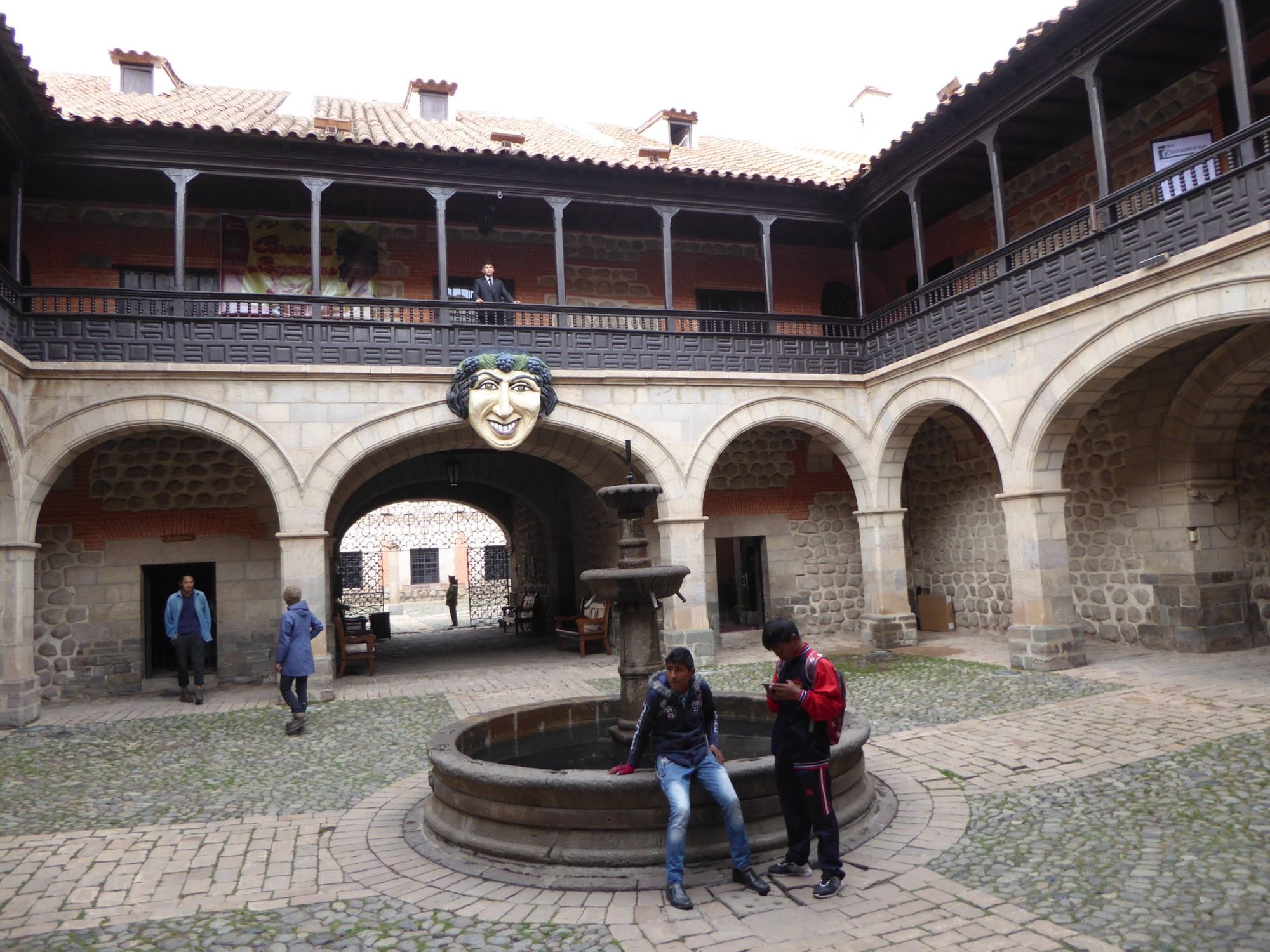
After two days in Potosí we took a shared taxi to Sucre, a two-and-a-half-hour journey along scenic mountain roads that gradually wound their way down to less breathless altitudes. Our driver took a typically Bolivian delight in tailgating, driving on the wrong side of the road and overtaking on blind bends, while we searched fruitlessly in the back of the car for somewhere to plug in our seatbelts.
Sucre couldn't be more different to Potosí; in fact, it's not really like anywhere else we went in Bolivia. While chaos reigns in Potosí and La Paz, Sucre is a model of calm and restraint. The streets are clean, the whitewashed buildings are given a fresh coat of paint every year, traffic waits obediently at red lights, and the whole place has a cosmopolitan, European feel which differs sharply from other Bolivian cities. Sucre is also Bolivia's capital, a title which most people wrongly assume belongs to La Paz, the seat of government.
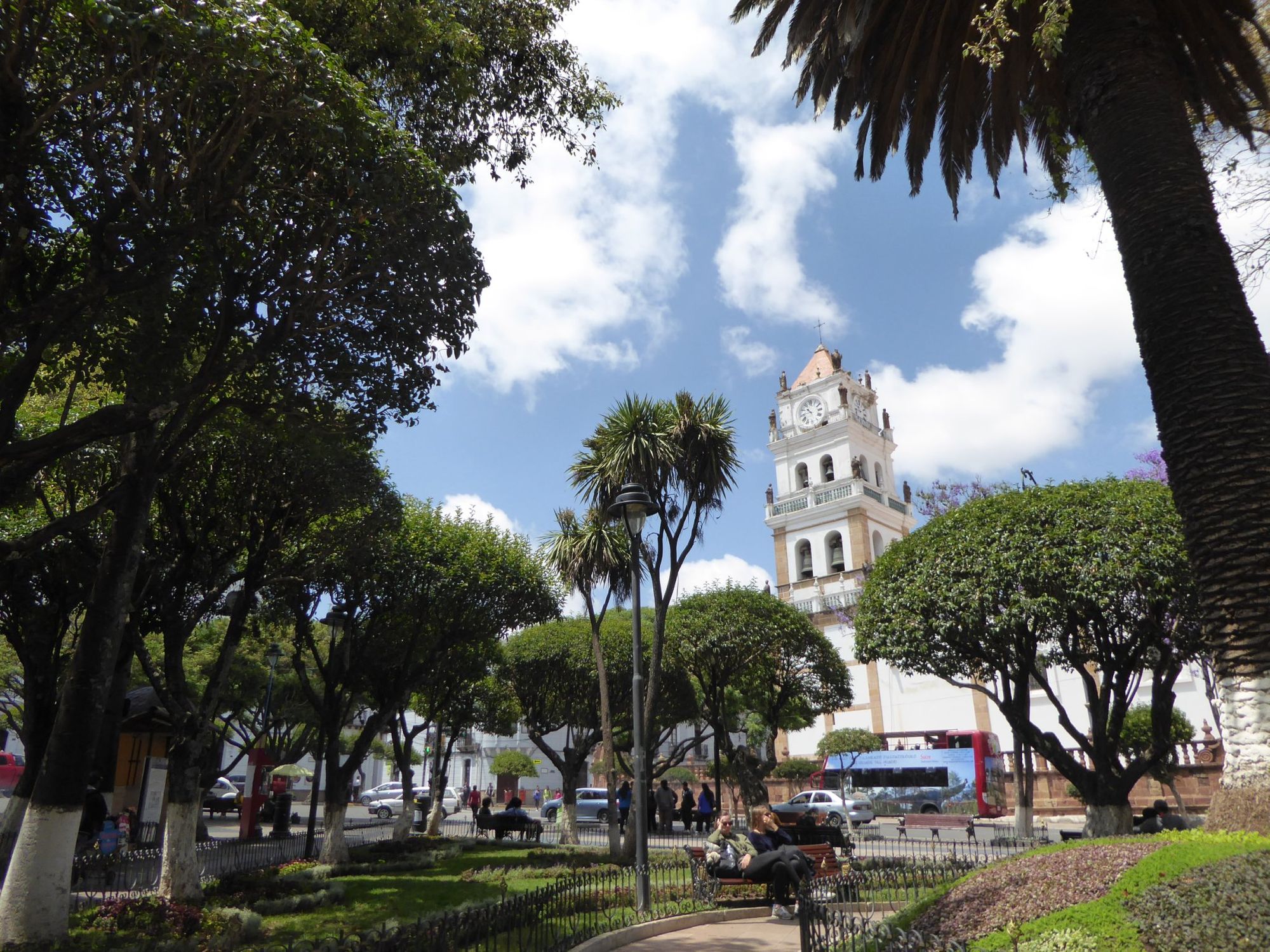
Sucre's most important museum is the Casa de la Libertad, where Bolivia's declaration of independence was signed in 1825. We were taken around the museum on a guided tour by María, who explained how the struggle for Bolivian independence formed part of a wave of anti-colonial uprisings that spread across South America in the 19th century. Bolivia was named after Simón Bolívar, the Great Liberator, who was also the country's first president.
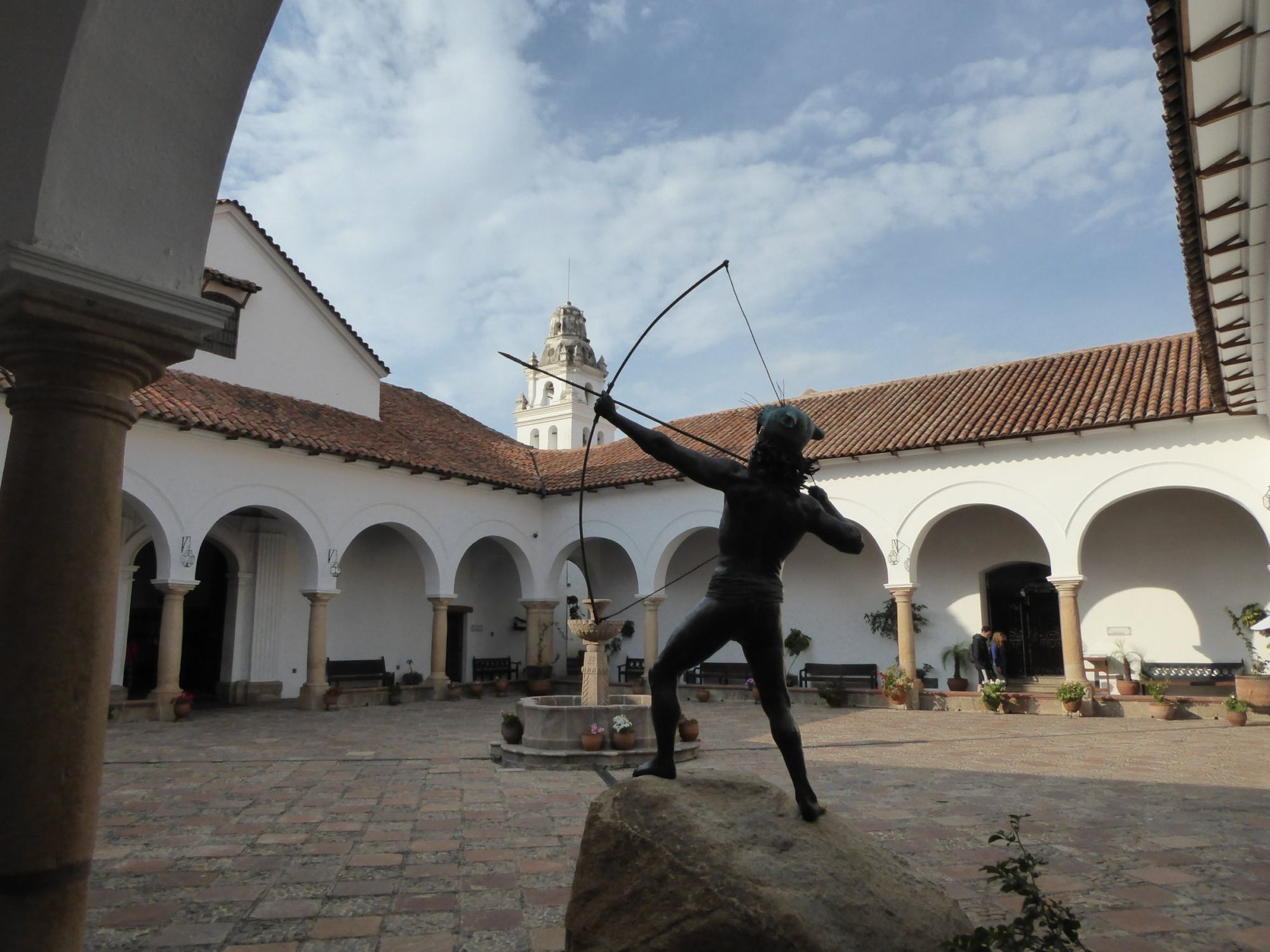
The Casa de la Libertad was full of portraits of Bolívar, including a giant six-foot-tall bust of his head. But there were also plenty of signs of the influence that the current president, Evo Morales, has had on Bolivia since taking office in 2006. In the main hall, where a copy of the Declaration of Independence is on display, the Bolivian national flag hangs alongside the Wiphala, a seven-coloured chequered flag that represents the indigenous peoples of the Andes. There are also paintings of indigenous heroes from the war of independence, where once there were only portraits of generals and presidents from the Hispanic ruling class.
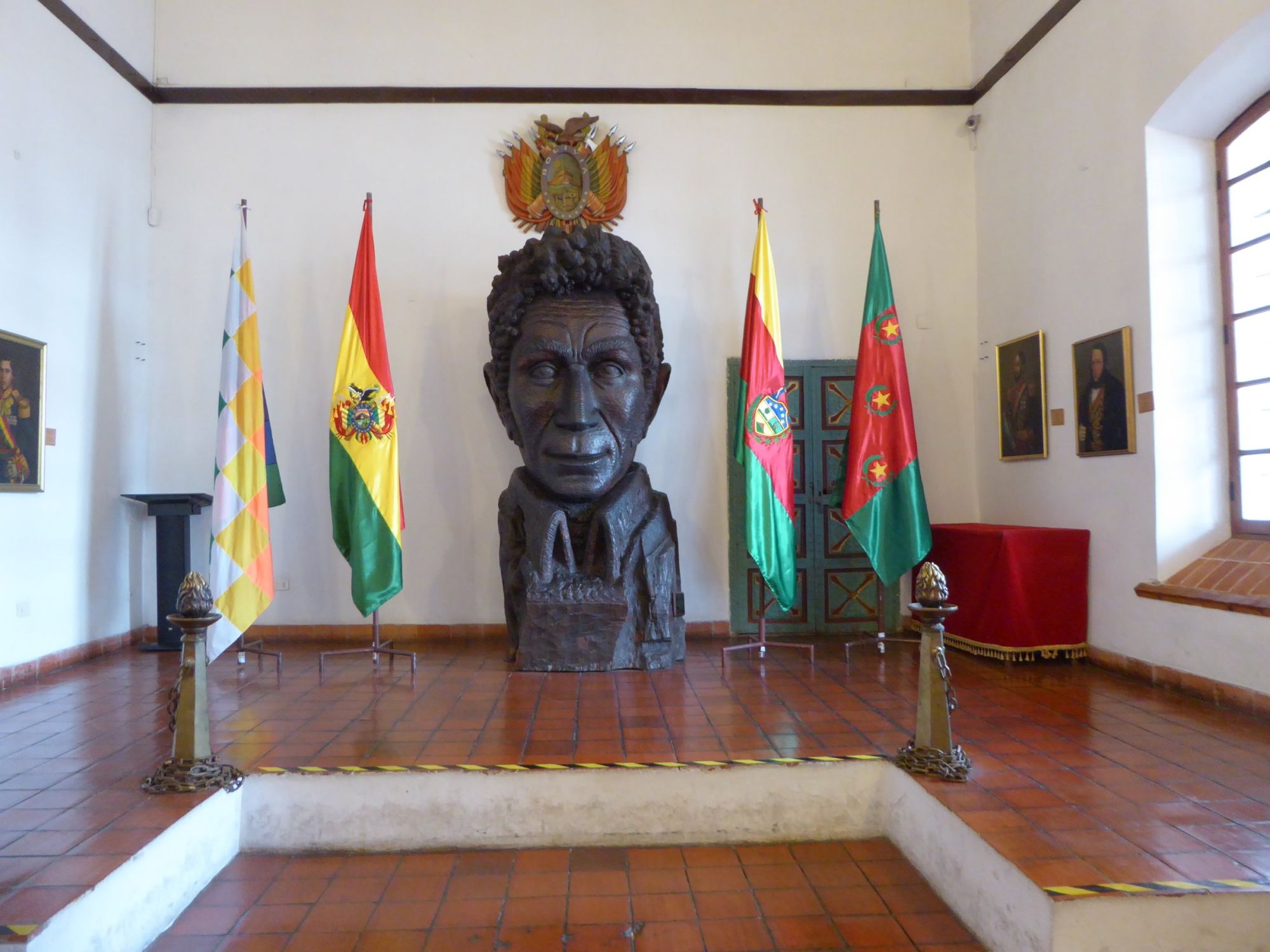
Morales belongs to the Aymara, one of the two main indigenous ethnic groups in Bolivia (the other being the Quechua). Since becoming president he has done a lot to improve the standing of indigenous Bolivians, who have traditionally suffered from discrimination and a lack of opportunity, despite forming the majority of the population. In 2009 Morales changed the official name of the country from the Republic of Bolivia to the Plurinational State of Bolivia, reflecting the country's diverse ethnic mix. There are 37 official languages in Bolivia, and it is now compulsory for schoolchildren to learn an indigenous language alongside Spanish.
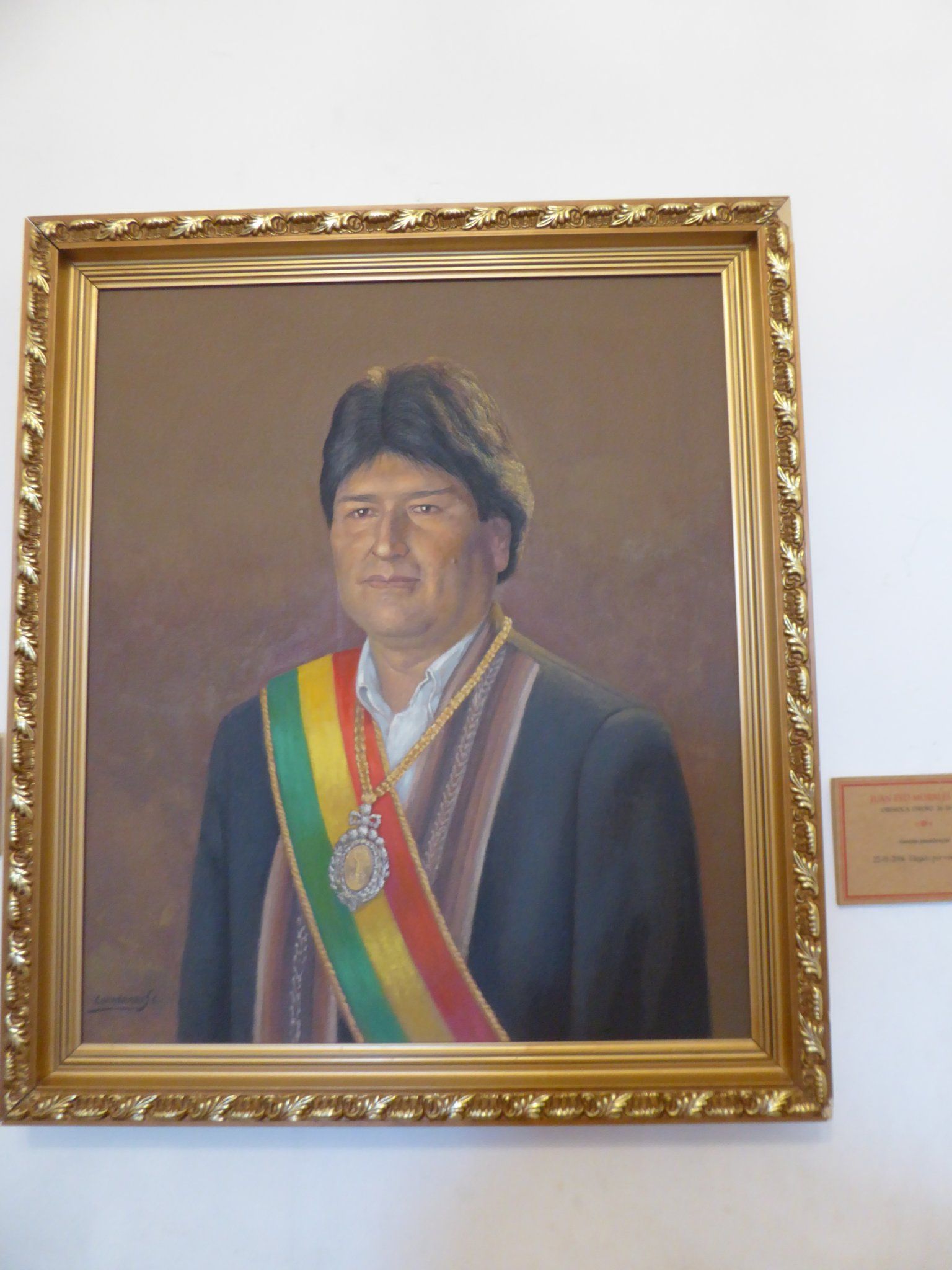
Sucre itself feels European and westernised, but the surrounding highlands are home to rural indigenous communities that still lead a very traditional way of life. Every Sunday many of these people descend on the village of Tarabuco, a couple of hours' drive from Sucre, for the weekly market.
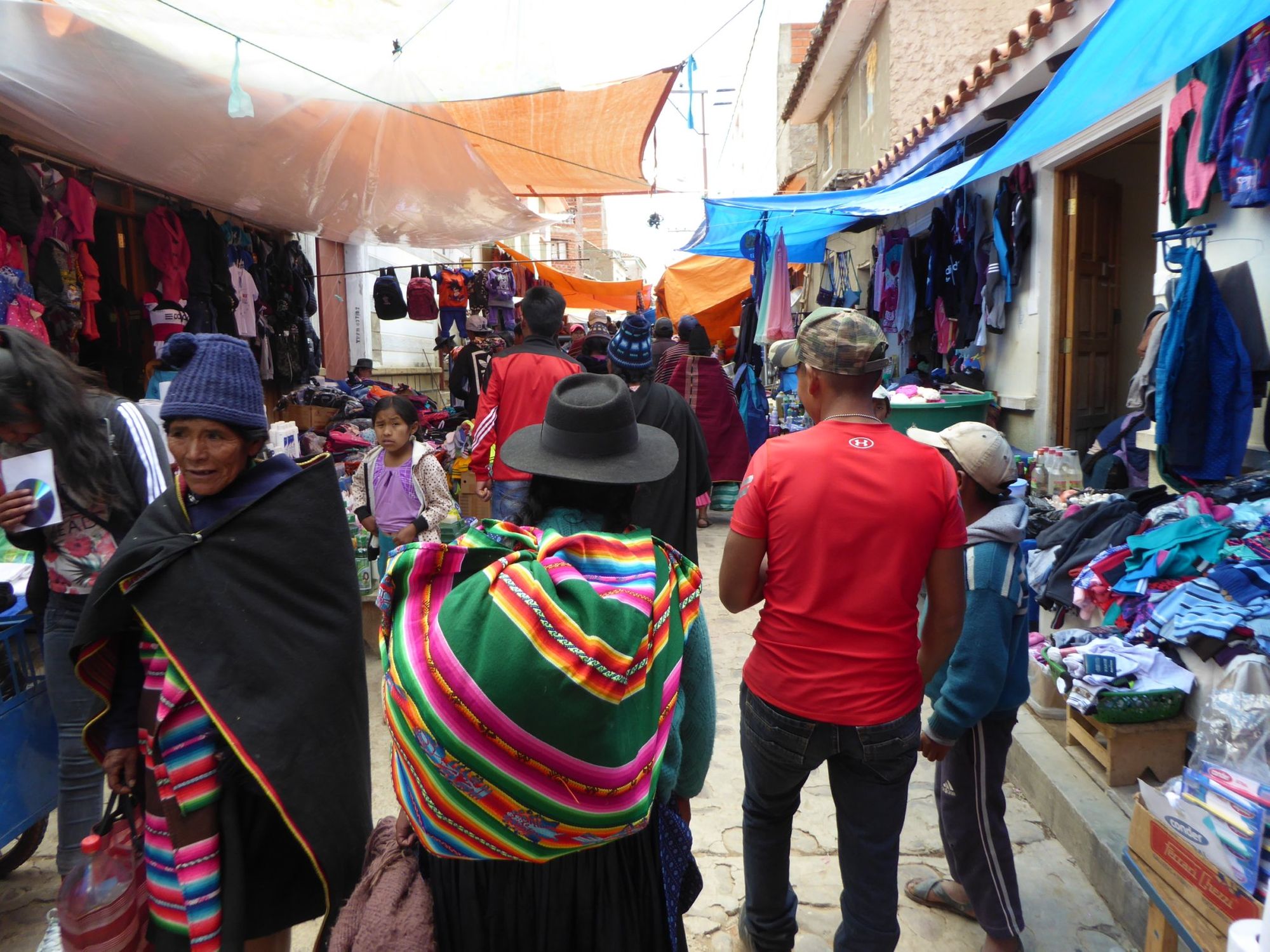
Although the village is small, we got lost almost as soon as we arrived. The streets around the market were heaving with people dressed in all manner of different costumes: young girls with babies tied to their backs in brightly coloured blankets; older women in towering headdresses decorated with pompoms, reminiscent of the hilltribes of northern Thailand; and men in ponchos and leather hats that echoed the helmets of the Spanish conquistadors.
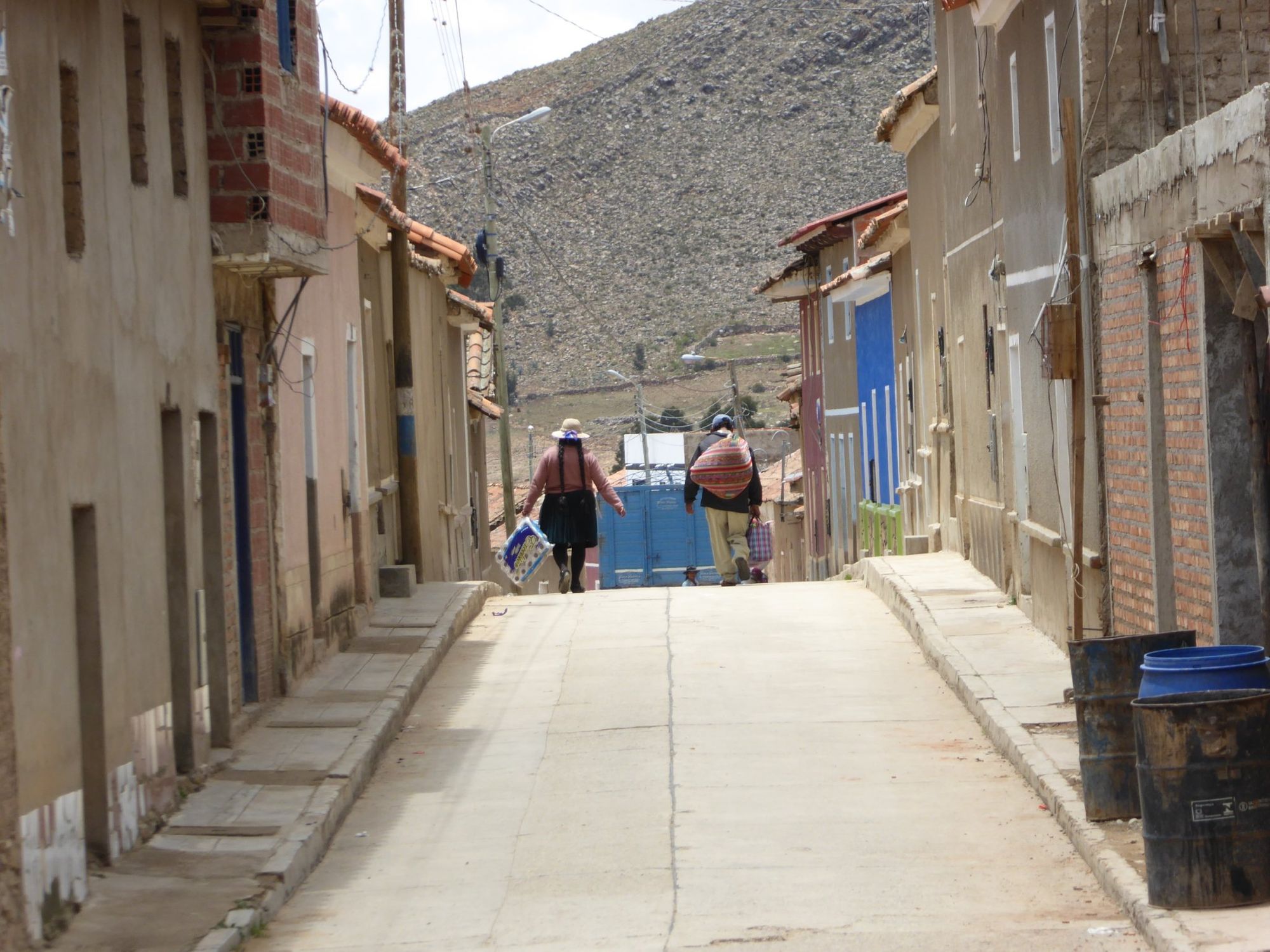
As we shuffled through the crowds we dodged kids pushing metal trolleys laden with goods, men reversing trucks round corners and pigs running free along the streets. Eventually we found our way out of the throngs buying everyday goods like soap, baby clothes and batteries, and emerged on a square lined with more tourist-oriented handicraft stalls. Some of the textiles on offer were handmade and faded, clearly very old, while others were obviously synthetic and mass-produced.
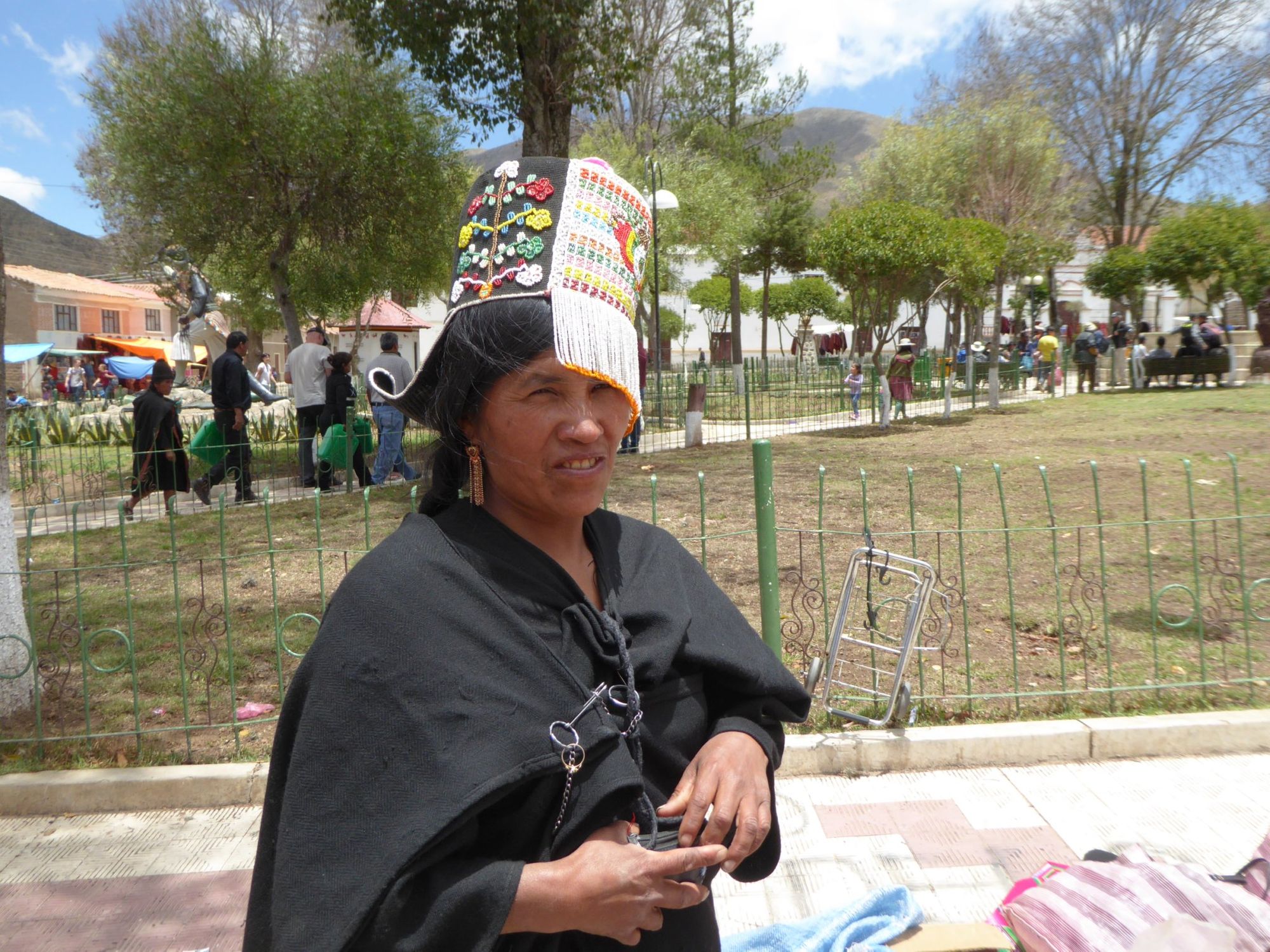
For all of his faults, I think Evo Morales has got one thing right: Bolivia is a state comprised of many different peoples, a plurinational state. The more we travelled round, the more we came to appreciate the country's incredible diversity, and nowhere was this more true than amongst the colourful and chaotic streets of Tarabuco.

